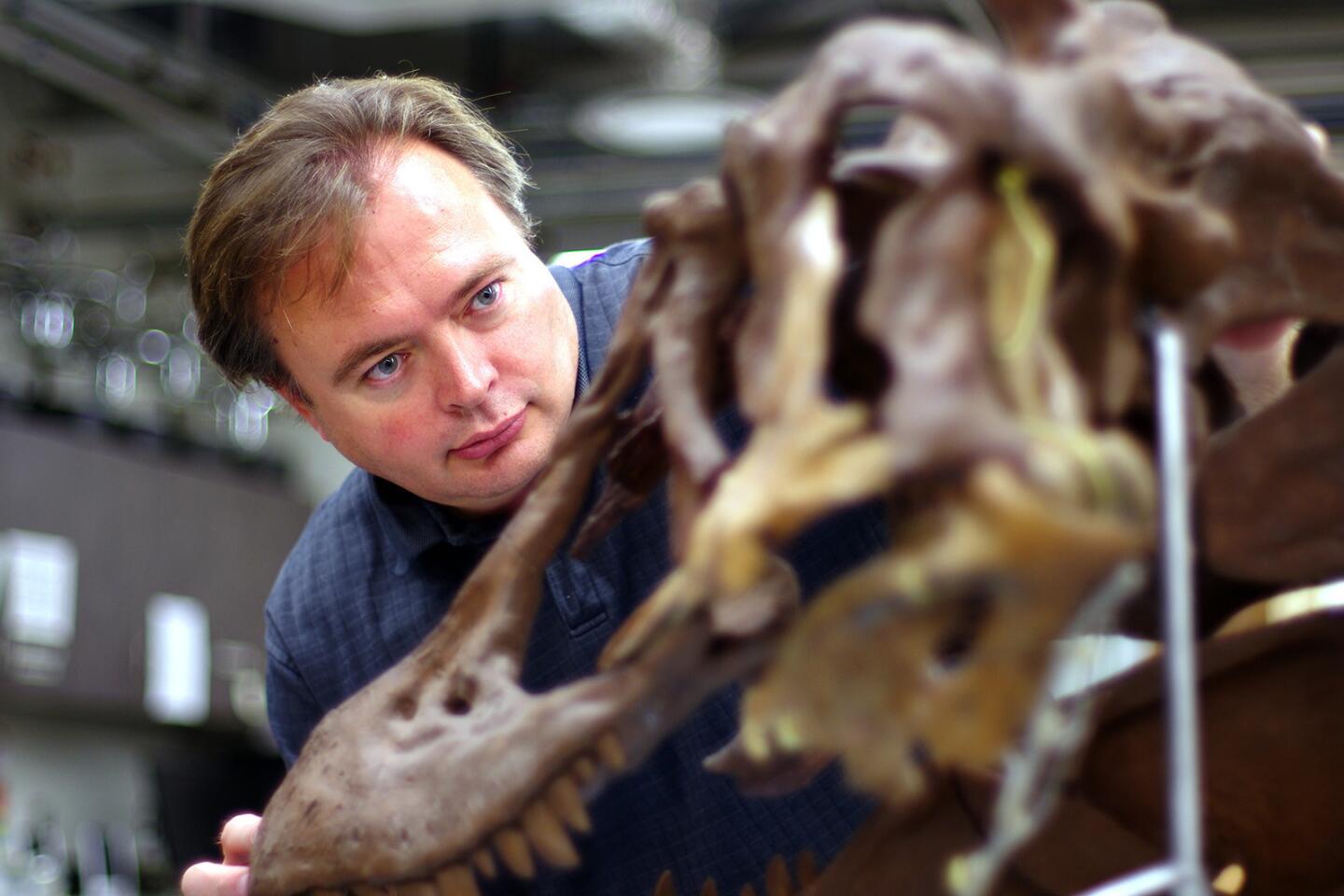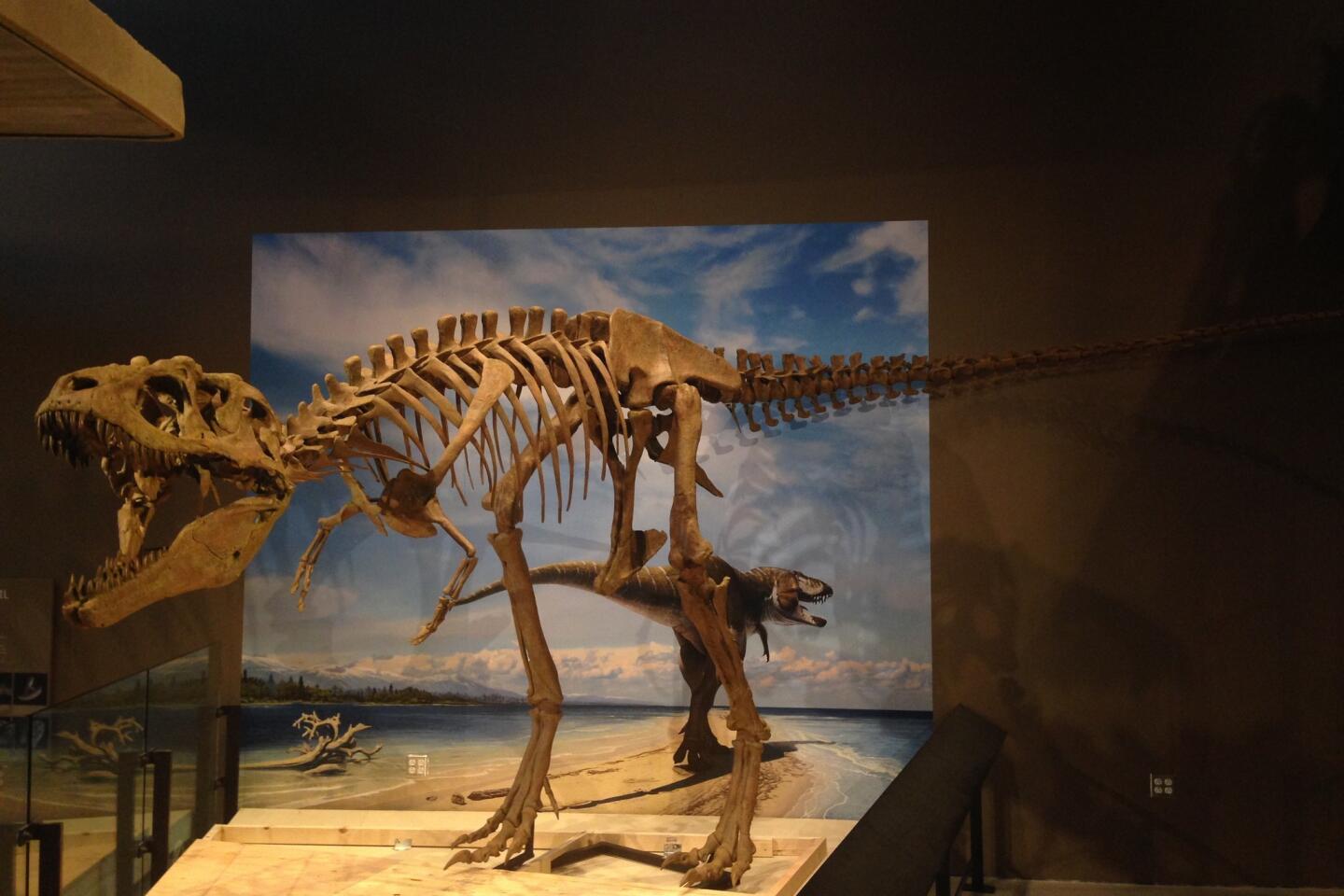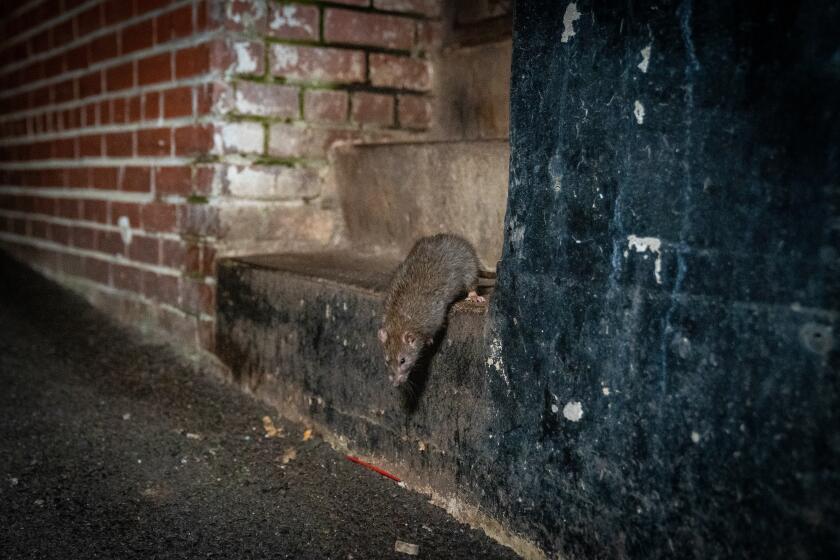King of gore dinosaur was the ‘bad grandpa’ of tyrannosaurs
- Share via
Meet the king of gore, a “bad grandpa” of Tyrannosaurus rex that tore through flesh with banana-shaped, meat-cleaver teeth.
Lythronax argestes, which translates roughly as Southwestern king of gore, appeared on the ancient island continent of Laramidia around 80 million years ago, when a rising inland sea divided the North American continent, according to a study published Wednesday in the online journal PLOS One.
That’s a much earlier appearance, by about 10 million years, for the class of dinosaurs known as tyrannosaurids, and suggests there may be many more species remaining undiscovered in the sedimentary rocks of the Grand Staircase-Escalante National Monument in southern Utah, according to University of Utah geologist Randall Irmis, curator of paleontology at the Natural History Museum of Utah.
“We knew there were other close relatives of Tyrannosuarus rex around by 76 [million], 77 million years ago, but what was unexpected was not only was it even older, but this new species is one of the closest relatives of Tyranosaurus rex, which lived 66 million years ago,” Irmis said. “So, it was really weird that the oldest tyrannosaurid yet discovered is actually one of the closest relatives of the youngest tyrannosaurids out there, which is T. rex”
The close relationship suggests that tyrannosaurids branched away from each other quite early, a theory supported by what is known about sea levels and other fossilized remains from that time period.
“It tells us that most of the branches that we see had to have diverged from each other before 80 million years ago,” Irmis said. “That means there’s a huge diversity of tyrannosaurids that we haven’t even found yet.”
L. argestes had a relatively wide skull and shorter snout than T. rex, and likely grew to about 30 feet – a good 10 feet shorter than T. rex, Irmis said. It had binocular vision, a trait inherited by T. rex, making it an equally adept predator.
“The teeth aren’t quite as big, but they’re sort of these banana-shaped meat cleavers,” Irmis said. “They’re serrated, just like a steak knife, but they’re really beefy teeth. Those aren’t just for slicing meat, they’re for inflicting damage and for crushing bone.”
The fossil, discovered in 2009, in Kane County, Utah, by Bureau of Land Management employee Scott Richardson, is among a trove of significant finds over the last two decades in the vast Grand Staircase-Escalante National Monument of southeastern Utah. It was excavated from the Wahweap formation by the BLM and Utah’s natural history museum, then analyzed by a team that also included researchers from the University of Alberta and Denver’s Museum of Nature & Science. The work was funded mostly by the BLM and National Science Foundation.
More than a dozen new species have been identified from fossilized remains in the sedimentary rock that once was the shoreline of the ancient island continent of Laramidia. Together, they are filling in the picture of biodiversity during a crucial time when life on Earth multiplied and flourished.
About 95 million years ago, an inland sea gradually flooded the center of present-day North America, isolating Laramidia. By about 80 million years ago, sea levels reached their peak, creating pockets of land within that continent that drove evolution of separate animal species, according to the researchers.
By then, Lythronax was on the scene, tearing and slashing its way through a bounty of herbivores in what likely was a lush environment. The fossil record suggests that even as the inland sea receded over the next 10 million to 12 million years, exposing more land, species likely stayed within separate habitats, perhaps due to environmental factors, Irmis said.
Regardless, Lythronax probably never did get to duel with T. rex – some 12 million years separate the two species.
“But there were probably other tyrannosaurid species living in western North America, so maybe it did come in contact with those,” Irmis said. “Whatever they fit in their mouth, they ate.”








